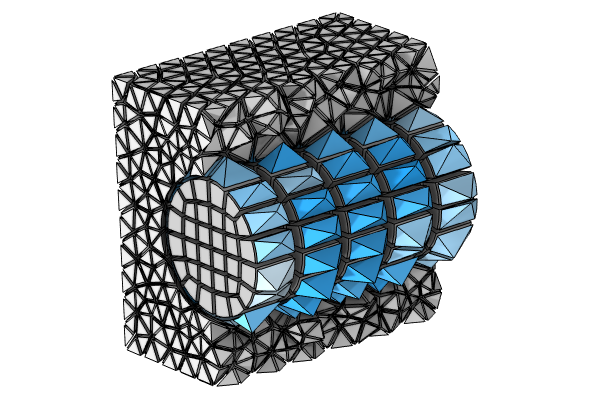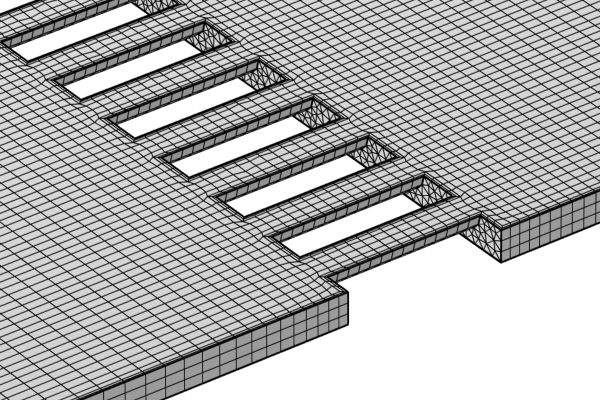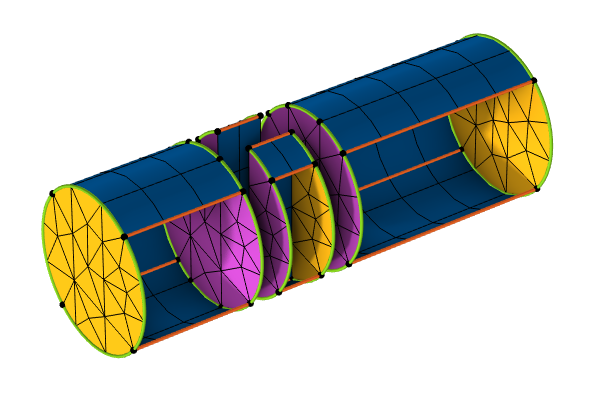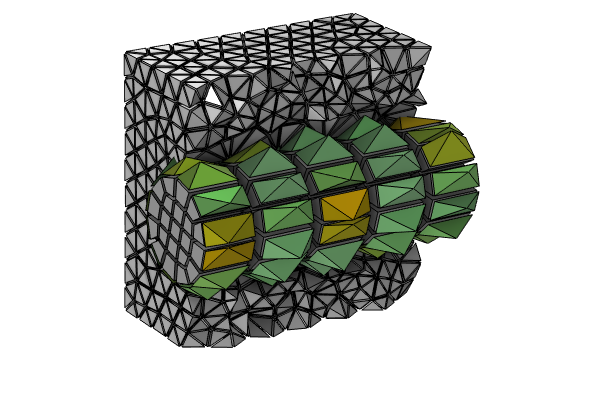Using Swept Meshes for Model Geometries
A paramount part of creating a finite element model is building the mesh. Depending on the physics phenomena involved and the accuracy needed, the appropriate mesh may vary a lot, even if the geometry stays the same. COMSOL Multiphysics® facilitates the decision making for your mesh by offering default, physics-controlled meshing (based on the physics being solved for and characteristic length of the geometry) that completely automates generating the mesh. In some cases, however, it would be optimal to build a user-defined mesh. COMSOL Multiphysics® offers functionality to do this as well. This course will focus on one such mesh type available: swept meshes.
An overview of the course and what is covered within each part is outlined below:
An example geometry of a cylinder with a through-hole that is swept meshed. Both the concept and construction of a swept mesh are discussed in detail in Part 1 of this course.
Part 1: Introduction to Swept Meshing
- What swept meshing is
- The advantages of using a swept mesh to discretize model geometries
- Application areas using swept meshing
- When to consider using a swept mesh
Part 2: Terminology and Requirements for Swept Meshing
- The terminology used to address different parts and aspects of a swept mesh
- What the requirements are for a geometry to be swept meshed
- When a geometry can be swept meshed
Part 3: Building a Quality Swept Mesh
- The workflow for building a swept mesh
- Choosing the source and destination faces for your swept mesh
- How to control the size and distribution of elements
- How a swept mesh affects adjacent domains and how to take those effects into consideration when building the mesh
As showcased in Part 3 of this course: The insertion of pyramids (magenta) and tetrahedra (green) in the carbon fibers tutorial model. The fibers are swept meshed (yellow) before the meshing of the surrounding domains. The front tetrahedra are hidden in order to be able to clearly view the swept meshing of the fibers.
After completing this course, you will be knowledgeable about swept meshing, how a geometry is swept meshed, and what conditions of geometry and modeling it is appropriate to be used for. You will also know how it can be used to develop more efficient meshing for many types of model geometries. Lastly, you will know how to build swept meshes firsthand and the workflow you should use to build them appropriately.
Submit feedback about this page or contact support here.




